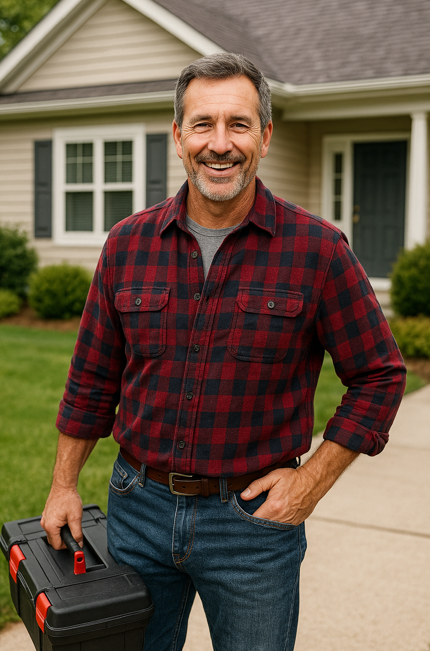Is a 20 kW Electric Furnace Right for Your Home?
Hey folks, Mike Sanders here. If you've ever stared at furnace specs and wondered, "Do I really need 20 kilowatts of heating power?" you're not alone. Whether you're replacing an aging unit or upgrading to electric heat, it's important to understand what you’re getting with a 20 kW electric furnace like the Goodman MBVK20DP1X00 with HKTAD201.
Let’s break it down in simple terms so you can make the right call for your home and wallet.
What Does 20 kW Mean in Furnace Talk?
20 kW equals 20,000 watts. In BTU terms, that’s about 68,240 BTUs of heating power. That’s more than enough to heat a 1,500 to 2,000 square foot home depending on your insulation, layout, and climate zone.
Rule of thumb: Most homes need about 30-60 BTUs per square foot, but factors like ceiling height, window coverage, and airflow matter, too.
You can use an online furnace BTU calculator to fine-tune your estimate.
Where a 20 kW Furnace Makes Sense
This size unit is ideal for:
-
Mid-sized homes in mild to moderate winter climates
-
Well-insulated homes with low heat loss
-
Replacing older resistance heating systems
-
Homes with solar panels or low electricity rates
Don’t have natural gas where you live? Then this electric furnace is a solid bet for consistent heat without the hassle of fuel deliveries or combustion.
What to Know About Electric Heating
Electric furnaces are known for:
-
100% energy conversion efficiency
-
No combustion gases, so no flue or venting required
-
Simpler installation (especially in new builds)
-
Quieter operation than gas or oil systems
But there's a catch: electricity often costs more than natural gas or propane. So while you might save on maintenance and equipment, your monthly energy bill could be higher unless your home is built for energy efficiency.
For more info on operating costs, check this energy comparison from Energy.gov
Is 20 kW Too Much or Not Enough?
This depends on your home’s layout and climate. Here's a quick example:
-
1,500 sq ft ranch in Georgia? 20 kW might be overkill.
-
2,000 sq ft colonial in Minnesota? You’ll need every bit of that output.
Over-sizing a furnace can cause short-cycling, while under-sizing leaves you freezing. When in doubt, get a Manual J Load Calculation from a trusted contractor or use a reputable sizing tool.
Let’s Talk Airflow: Why 2,000 CFM Matters
The MBVK20DP1X00 furnace paired with the HKTAD201 heating kit isn’t just about power — it also pushes out up to 2,000 cubic feet of air per minute (CFM). That’s key for:
-
Moving heat evenly throughout your home
-
Supporting add-ons like heat pumps or central AC
-
Avoiding hot and cold spots in larger floorplans
Good airflow equals better comfort and system longevity. It's a big part of what makes this Goodman unit a smart choice.
Pros and Cons of a 20 kW Electric Furnace
Pros:
-
No gas hookup or venting needed
-
Lower upfront cost vs. gas furnaces
-
Compatible with heat pumps and air handlers
-
Excellent for clean energy homes
Cons:
-
Higher electric bills in colder climates
-
Needs a 240V breaker panel and enough amperage
-
May require ductwork upgrades for proper airflow
If you're upgrading from baseboard heat or old strip heaters, this furnace is a serious upgrade.
When It Makes Sense to Choose the Goodman MBVK20DP1X00
You should seriously consider this model if:
-
You need efficient electric heat without bells and whistles
-
You want a reliable brand with solid warranty backing
-
You're pairing it with a central AC or heat pump
Plus, it's built with durable components and a tight-sealing cabinet that helps keep operating costs in check.
For full specs and buying details, check out the Goodman 20 kW Electric Furnace product page.
Mike's Final Take
If your home falls into that 1,500–2,000 sq ft range and you're leaning toward electric, the Goodman MBVK20DP1X00 is a strong contender. It's powerful, clean, and quiet — just make sure your electrical panel can handle the load, and your ductwork is up to snuff.
Still unsure? Reach out to a local HVAC pro or contact The Furnace Outlet. They know their stuff and can guide you to the right setup.
Stay warm, Mike Sanders







